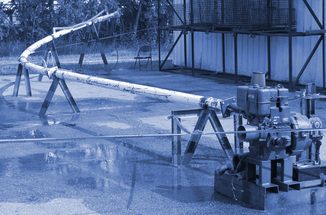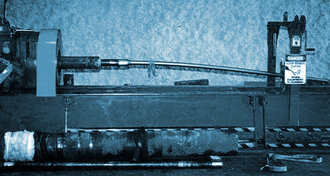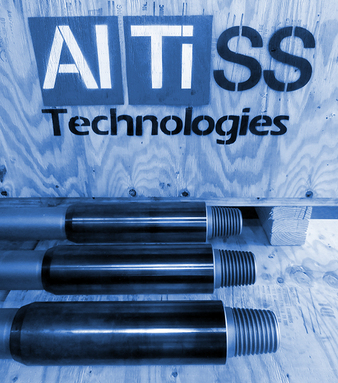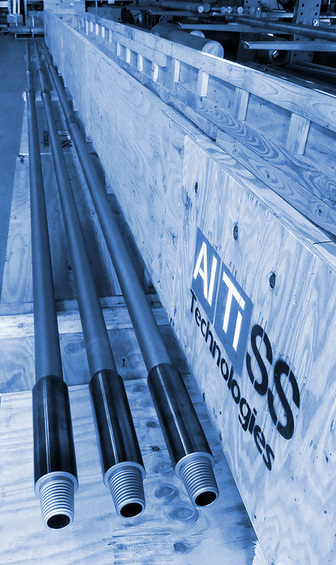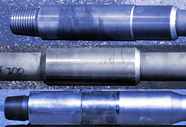|
Improved Fatigue Resistance Titanium Drill Pipe
Over a decade ago, a need was recognized in the industry for a drill pipe that could be used reliably in short radius re-entry (rotary) drilling projects where the radius of the curvature of the hole from the kickoff point is less than 30m. There was a lot of interest by major oil companies in the development of titanium pipe both as a means to increase the build-up rate as well as extend the reach of short radius lateral wells. Historically, the success of short radius and extended reach drilling has been limited by the weight, and the physical and mechanical properties of pipe materials and connections which must have sufficient strength to transfer rotational power from the rig to the drill bit, while at the same time withstand the extreme stresses which are generated when the drill pipe is severely bent while rotating. Benefits of Titanium Drill Pipe Titanium alloys were initially developed for drilling applications because they had a low modulus of elasticity and provided fatigue resistance which was at least 10 times better than traditional materials. This translated into an increased number of rotational cycles which could be withstood during a short radius drilling operation. Furthermore, the high strength and corrosion resistance of titanium alloys made them attractive for a variety of well conditions. In the mid 1990’s, ALTISS Technologies, and Titanium Engineers Inc. began their research to improve the performance of titanium and other light metals in drilling applications. Now, ALTISS Technologies has significantly improved the fatigue life of its prototype titanium drill pipe without sacrificing the other beneficial properties of strength and corrosion resistance. Through a number of prototype programs, which included modeling, and testing, the company has developed a unique method of manufacturing titanium drill pipe. The company is now moving into the test phase of a breakthrough titanium drill pipe which is able to achieve a 10m/34’ radius curve, yet provide up to ten times the number of rotational cycles of previous titanium drill pipe in actual drilling operations. This accomplishment was achieved through a combination of extensive research into the processing of titanium and other alloys to improve their properties, combined with state of the art engineering of connections which could withstand the rigors of ultra-short radius rotary drilling and were compatible with the materials and environment to which they would be exposed. Fig 1. Titanium Drill Pipe operating in 30’ short radius drilling simulation
Testing A key part of the project involved developing proprietary high strength connections which work in concert with our highly engineered titanium alloy pipes to provide fatigue resistance characteristics that far exceed products which have been available in the past. Extensive engineering and simulation using computer modeling (FEA) as well as laboratory testing have proven that the product is viable. Fig. 2 - Titanium Drill Pipe rotating in 30’ radius test fixture
Various sizes of pipe have been evaluated in fatigue tests and have thus far performed extremely well. An initial production lot of small diameter drill pipe with connectors was completed in the summer of 2011. Results of tension and torque tests on this drill pipe have been excellent. The pipe has gone through partial testing in a specially manufactured test fixture designed to simulate the curvature of an ultra-short 30’ radius re-entry well. (see Fig. 2) Fig. 3. - The photo above shows a test by Titanium Engineers of small diameter short radius titanium drill pipe rotating with a 25’ (7.6m) radius of curve in cycle fatigue testing.
2-3/4” Titanium Drill Pipe for Ultra-short radius drilling
|
|



